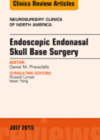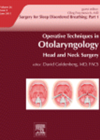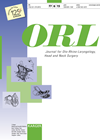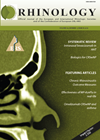
Journal Reviews archive for January 2016
CSF leak – endoscopic or open repair?
Cerebrospinal fluid (CSF) rhinorrhoea is well known to the ENT surgeon. It commonly occurs secondary to a predisposing event such as accidental or iatrogenic trauma. When it occurs spontaneously, it can be associated with benign intracranial hypertension. The commonest CSF...
How should I excise sinonasal tumours, open or endoscopic? En bloc or piecemeal?
Sinonasal tumours often present late because initial symptoms mimic benign disease. They tend to produce more unilateral nasal symptoms, and patients with advance disease often describe paraesthesia and other cranial neuropathies. They only account for approximately 3% of upper aerodigestive...
Medical trends in sleep disordered breathing
This duo provide an eloquent outline of sleep disordered breathing in general, with particular emphasis on the medical impact and associations of the condition. The increasing prevalence of the condition is described, with increasing worldwide obesity, increased association of cardiac...
Clinical assessment in OSA
This paper divides the assessment up into anatomical (nasal and oropharyngeal), endoscopic and imaging. It points out the salient features to look out for in OSA patients with regards the nasal valve and also oropharyngeal anatomy, with tonsil hypertrophy grading...
Mitomycin in adjuvant treatment of laryngotracheal stenosis
Laryngotracheal stenosis (LTR) is a difficult condition to manage, and the effectiveness of surgical treatment is limited by the tendency of scar tissue to reform. Mitomycin has been used as a controversial adjuvant to surgical treatment for many years. Drawbacks...
Pyriform turbinoplasty
This article describes a new operative technique to improve nasal airflow, the pyriform turbinoplasty. This specifically addresses the lateral part of the nasal valve where there may be impingement into the airway in select patients. This corresponds to the area...









